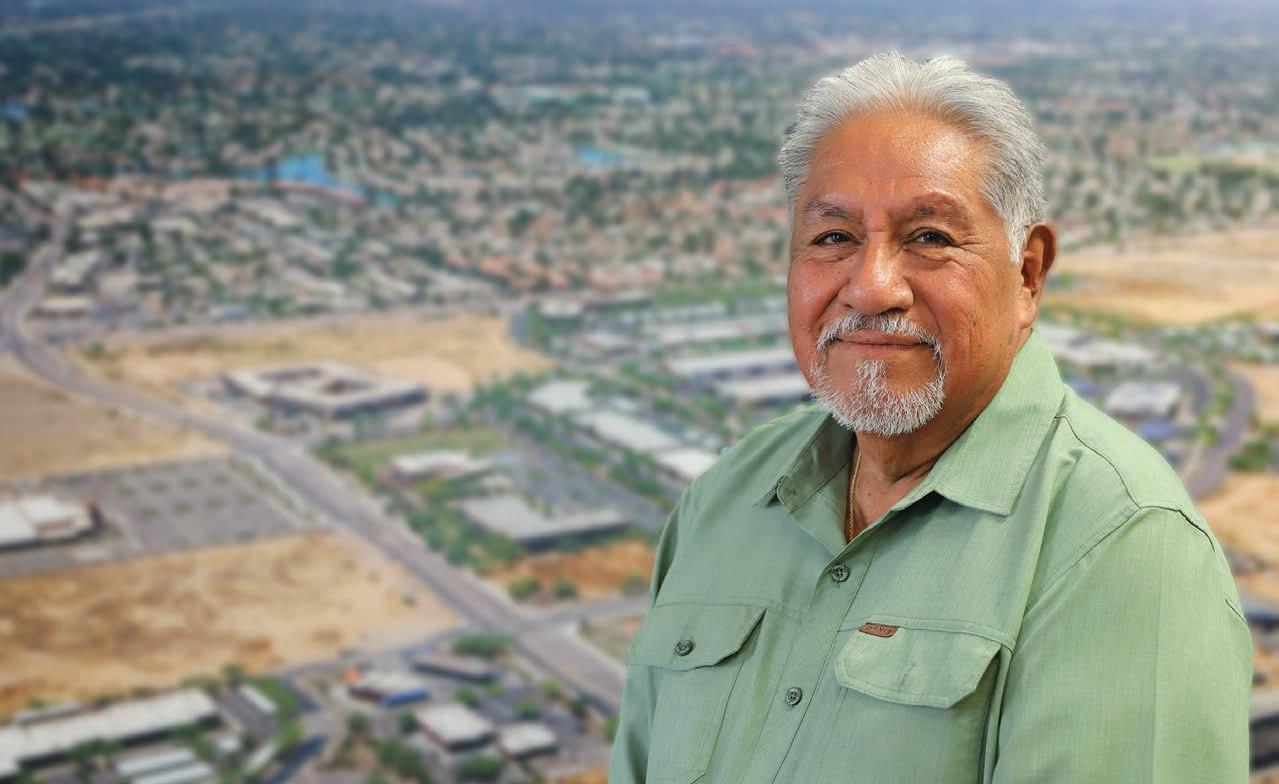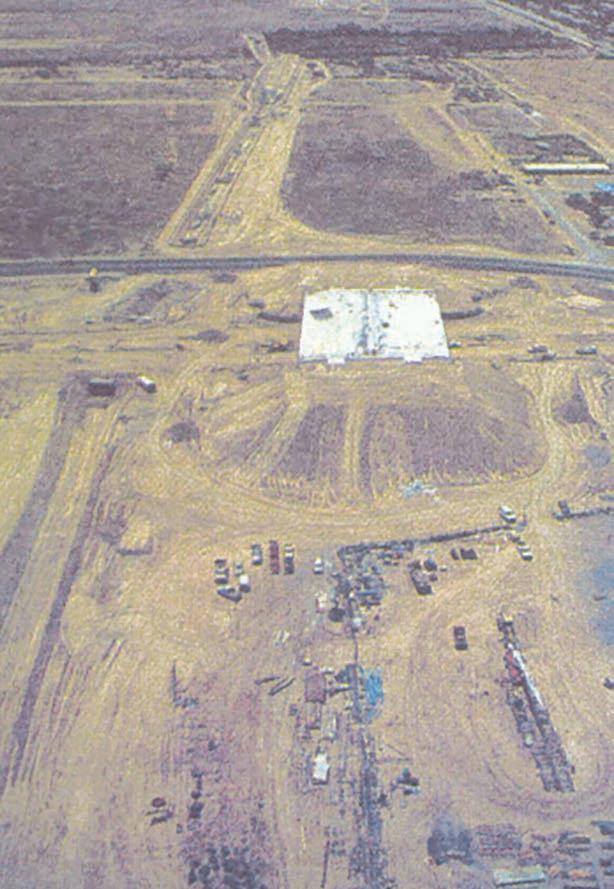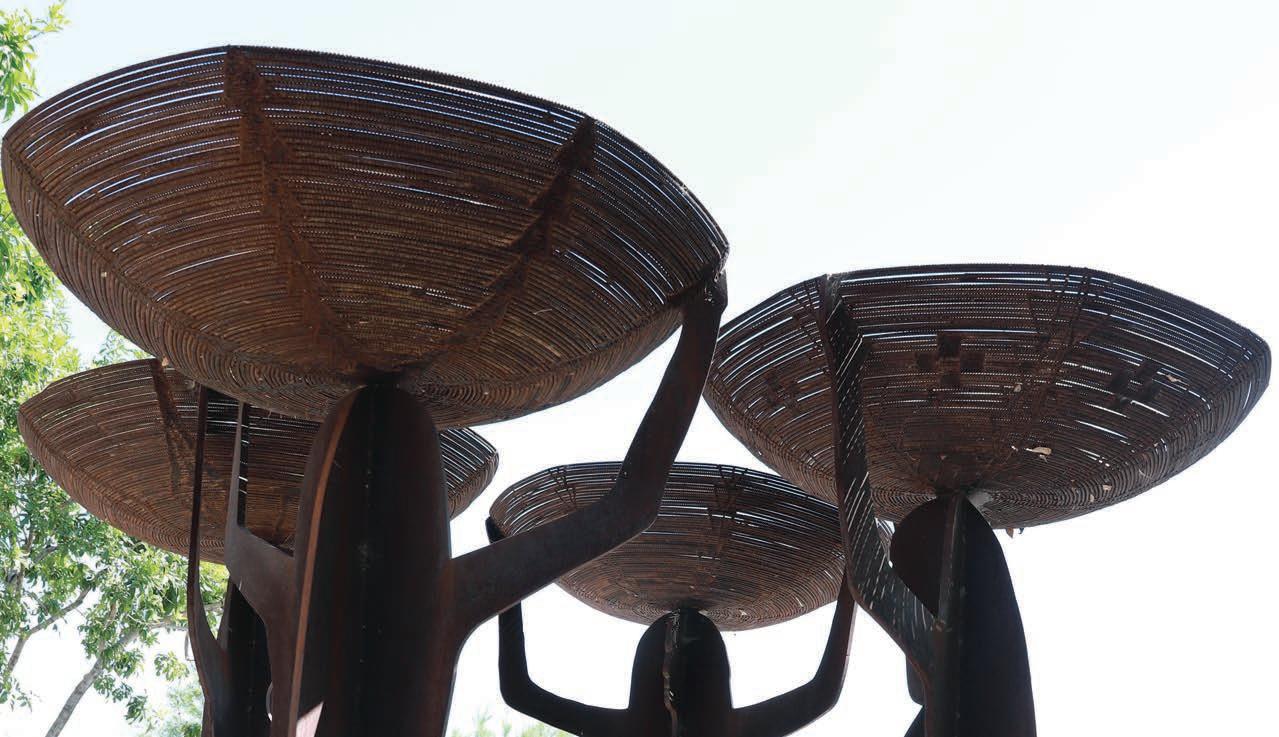
5 minute read
Community Spotlight: Russell Ray
Russell grew up in a traditional adobe house with a dirt floor on the northwest corner of Camelback and Longmore. He lived there with his siblings, parents, grandparents and great grandparents.
When he was very young, he would run around barefoot and create games with sticks, boards and other found objects in the neighborhood. He was taught from a young age to help not only their family, but also their neighbors.
When Russell was nine, the US government provided funding to bring running water to Salt River. As part of the agreement, each household was to contribute 1,500 hours of labor to install the system. Though he was young, Russell worked on behalf of his family and for those who had no one to complete the hours for them, such as his elderly neighbors. He did the same during his middle school years HUD provided funds for modern housing.
Russell attended day school in Salt River and middle school in Mesa. He did not know much English and remembers being punished when spoke in his native language. However, Russell developed a love of running and excelled at cross country on the school’s track team. He was good enough that when he couldn’t make it to school, the truant officer would give Russell a ride to school so he could stay on the team.
When he wasn’t doing homework or working, Russell would walk with his siblings and neighborhood friends to swim at the irrigation pumps or Arizona canal. He recalled it wasn’t as dangerous then as it is today. He also recalled not knowing many people.
“Back then we had to walk everywhere so we really only knew
our relatives and neighbors,” recalled Russell. “Growing up I didn’t know that there were other tribes, other nationalities.”
That changed when he attended high school at Stewart Indian boarding school near Carson City, Nevada. There, he met boys from many other tribes around the nation. It really opened his eyes to other cultures and traditions, but also shared their experiences as indigenous peoples.
The school discovered that Russell used to run track in middle school and asked him to be their track team.
“There were seven of us: two Navajo, two Apache and three Pima, including me,” recounted Russell. “At first no one paid us any attention because we were native, but we were soon competing and winning against college teams even though we were only in high school.”
When he completed high school, Russell returned to Salt River to learn drafting through a government program. He took a BIA job in downtown Phoenix.
In his mid-20s, a position opened up within the community. The government was still in its infancy as was called the Planning & Land Management Department. Russell worked with the late Johnson Enos and Terrance Leonard, surveying and drafting home site and creating legal descriptions. Seeing his talent, Russell’s mentors wanted him to gain experience beyond allotted lands within the community.
He remembers Johnson and Terry telling him, "If you want to excel in this career, we encourage you to go work off the community and learn all that they (outside cities) have to offer, then come back and help our people.”
He did that for 25 years. In addition, he took courses on his own through the community college to learn about soils, drilling wells, how to do inspections, as well as public communication, create presentations and handle project management and finances. He also learned basic law so he could advocate for the community.
In 1988, the council secretary informed Russell that he had been nominated to represent Lehi on a council seat. He accepted, ran and won.

He served in that capacity for 12 years. During this time, he assisted in the water settlement negation with the US government under late Salt River President Gerald Anton. He also participated in bringing the freeway and gaming to the community, as well as the liquor ordinance; initiatives which were all approved through a vote by enrolled community members.
He is honored to have served the community and bring opportunity to its members.
“We now have our own stores to go to. It has created jobs for those who want to work and revenue assistance for services such as burials, which had been a challenge before. These initiatives also helped to establish Memorial Hall and the Cry House in Lehi,” said Russell. “Businesses [on the community] are charged taxes and fees that help our community. We now have our own fire, police and court. We are self-staining like other municipalities and our salaries are competitive.”
Today, Russell continues using his knowledge, experience and business skills assisting projects such as the Pima Center commercial development and the 101 freeway, commercial corridor within the community. His duties included review the construction plans and follow up on permits for projects, as well as developing the cultural esthetic, including the use of native plants and sculptural elements. He also uses his knowledge of the law to help community members advocate for themselves.
“We have survived for many years, and we will continue to survive many generations in the future. We will continue to be who we are, indigenous people,” said Russell. “In these days; it’s very different than playing and running barefoot in the dirt.”











